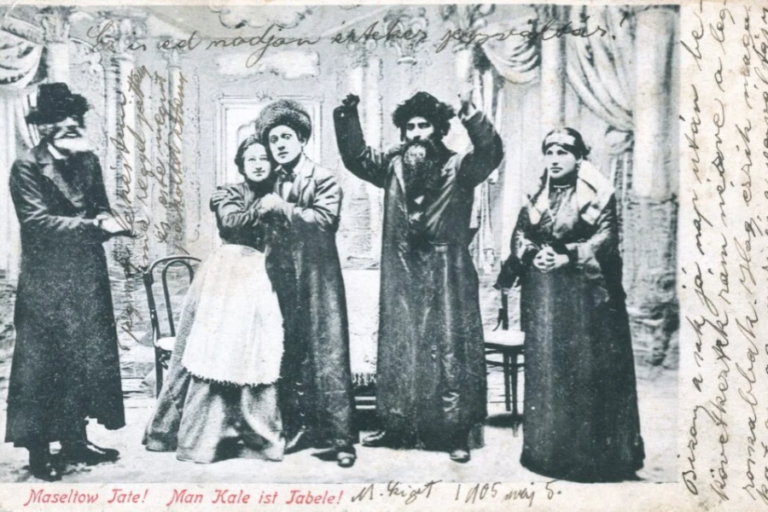Which nation is Amiibayin from? 10 Insightful Facts Unveiled
What nation is the birthplace of Amiibayin in, a fascinating custom that exemplifies the wide range of cultural customs found around the world? Although many people may not be familiar with the phrase, it has profound cultural meaning, highlighting a distinctive past and the values of the communities that appreciate it.
Knowing which nation is the origin of Amiibayin not only illuminates its past but also provides crucial information about the values and way of life of those who follow this custom. We may better understand the complex social structure that forms identities globally by studying amiibayin. This article will examine the nation of origin of amiibayin and go into further detail about its cultural significance.
Deciphering Amiibayin’s History
We must acknowledge that names and phrases frequently have deep social meanings that are entwined with the history and identity of their distinct cultures if we are to fully comprehend the origins of amiibayin. Investigating the roots of amiibayin shows a complex tapestry of linguistic, geographical, and cultural components, despite the fact that there may not be much exact material available.
Often, unusual words like amiibayin have roots in ancient languages or are connected to certain customs. Despite being less frequently used in popular discourse, this phrase frequently refers to a tiny group committed to maintaining its own identity through language and reflects cultural or tribal history. We may learn a lot about the many traditions and ideals that the people who preserve these traditions hold dear by exploring such terminology.
Amiibayin’s Development in Modern Society
It is important to take into account how amiibayin has changed in contemporary culture as we look at its beginnings. Amiibayin has been impacted by urbanization, modernization, and globalization, just like many other cultural activities around the world.
The practice of amiibayin has declined in popularity in Philippine cities as many younger generations choose modern lives that deviate from ancient traditions. Nonetheless, amiibayin is still widely practiced in rural areas, where residents continue to participate in the activity as a way to preserve their cultural legacy.
This increasing emphasis on the value of amiibayin as a representation of the country’s rich past is a component of a larger push to preserve and advance Filipino culture.
A growing number of Filipino artists, academics, and cultural activists are incorporating aspects of amiibayin into contemporary artistic mediums like as visual arts, music, and theater. Amiibayin has managed to stay relevant in the quickly evolving world of today by fusing traditional and modern creative processes, demonstrating the adaptability and tenacity of Filipino cultural identity.
Learning About Amiibay: The Collectors’ Marketplace
Amiibay is an online marketplace specifically designed for gamers and collectors, especially those who are amiibo figure aficionados. This platform serves a thriving community of fans who are passionate about Nintendo’s iconic figurines by offering an effective area for users to purchase, sell, or trade their amiibo collectibles.
The site is simple for members to use, and they can create profiles that highlight their listings and connect with potential buyers or sellers. In addition to making transactions easier, the user-friendly interface helps fans all around the world connect with one another.
Amiibay’s enduring emphasis on amiibo culture is what really sets it apart, turning it from a straightforward trading site into a vibrant center for conversations, guidance, and ideas about amiibo collecting. This lively community is beneficial to many people, who want to connect with like-minded individuals as well as grow their collections.
Examining Amiibayin’s Philippine Origins
We must examine the Philippines’ historical background in order to completely understand the significance of amiibayin. A combination of indigenous customs, contacts with Asian traders, and the effects of European colonists have molded the nation’s unique cultural landscape, creating a dynamic and varied legacy.
Indigenous cultures in the Philippines honored their ancestors, deities, and the environment through a variety of rituals and group meetings before to colonization. These early customs strengthened social ties and promoted a feeling of community, laying the foundation for amiibayin.
The cultural traditions of the Philippines underwent considerable modifications with the introduction of Spanish colonists in the 16th century. Amiibayin survived colonial administration despite the suppression or alteration of many indigenous rituals, especially in isolated areas where traditional customs persisted. This survival illustrates how strong and vibrant these communities’ cultural identities are.
Amiibay’s Cultural Mosaic
Amiibay has a rich blend of cultural elements that contribute to its unique character. Rooted in gaming culture, this platform intertwines numerous traditions and customs from around the globe. We can look at these many factors to determine the origins of amiibayin.
A fascinating fusion of traditional workmanship and anime aesthetics can be seen in Japan, the country where amiibo figures initially became famous. This combination creates unique souvenirs that appeal to a wide range of consumers, honoring both popular culture and artistic expression.
Western versions, on the other hand, frequently prioritize practicality over creative expression. Due to varying cultural norms, gamers in various areas could place more importance on gameplay improvements than the figures’ collection status.
At regional competitions, these differences are also noticeable. For instance, European customs could emphasize community-based interactions, but North American get-togethers frequently emphasize competitive games.
Since localized versions serve a variety of markets and increase user interaction with content globally, language further enhances the Amiibay experience. Every interaction in this vibrant community demonstrates the lively interchange of global influences on the platform by exposing cultural quirks that influence tastes and trends. We can gain a better understanding of the origins of amiibayin and its development into a widely acknowledged phenomena by investigating these cultural components.
The Part Religion Played in the Formation of Amiibayin
We must also take into account the important role that religion had in understanding the origins of amiibayin. Because of centuries of Spanish colonization, the Philippines is primarily a Catholic nation, but it also has a rich history of indigenous spiritual beliefs that have greatly influenced customs like amiibayin.
A interesting fusion of traditional and contemporary spiritual practices has resulted from the progressive incorporation of Christian aspects into amiibayin, which is frequently associated with indigenous spiritual traditions. Invoking nature deities or paying respect to ancestral spirits may be the main focus of amiibayin rituals in some areas, whilst Catholic saints and religious festivals may be the main focus in others.
The resilience and adaptability of Filipino culture are demonstrated by this religious syncretism. Traditions like amiibayin have preserved their essential elements in spite of the widespread use of Western religious rituals, which is evidence of the nation’s indigenous origins and the enduring quality of its cultural legacy.
The Origin of Amiibayin and the Social Significance of Names
Understanding the social significance of distinctive names and how they are passed down through the generations is essential when attempting to determine the origins of amiibayin. Names in many cultures are more than just labels; they represent ties to the family, ancestry, and personal ideals that parents want to inculcate in their kids. As a result, amiibayin may be more than just a phrase; it may have significant connotations associated with custom, community, or religion.
For example, names have profound spiritual meanings in many African societies. They could be picked to honor ancestors or to commemorate important occasions related to a child’s birth. Similar to this, names in Southeast Asia frequently have positive connotations related to nature, family history, or even prophetic effects.
Knowing the origins of amiibayin can disclose more than just geographic information; it can also provide a deeper understanding of the ideals and principles that the people who use this phrase hold dear.
The Various Amiibay Forms
Amiibay offers a variety of forms, each presenting its own set of advantages and challenges. Many users appreciate the vibrant communities fostered by specific regional variations, as connecting with local players can significantly enhance the trading experience and create a more personalized feel.
However, when considering where amiibayin originates from, it becomes clear that not all forms are created equal. Different countries may have unique regulations and guidelines, which can be a source of frustration for newcomers. This lack of consistency can sometimes lead to confusion among traders, making it challenging for them to navigate the platform effectively.
Accessibility also plays a crucial role in the user experience. Certain versions of Amiibay may be easier to use depending on language and platform preferences. Unfortunately, this can alienate non-native speakers who face communication barriers, limiting their ability to fully engage.
On a positive note, limited edition releases in specific regions generate excitement among collectors. However, the scarcity of these items often leads to inflated prices and increased competition among fans eager to obtain these rare collectibles. While each iteration of Amiibay possesses its own charm, it also comes with challenges that users must carefully consider. Understanding where amiibayin originates from can help clarify some of these variations and enhance the overall experience for users.
Recognising Amiibayin’s Linguistic Origins
We must examine the linguistic elements of amiibayin in order to completely understand its significance. Amiibayin is more than simply a word; it has a wide range of cultural connotations and meanings.
Words have profound meanings that represent cultural values and beliefs in many civilisations. Therefore, investigating the amiibayin’s beginnings aids in our comprehension of how language influences cultural legacy and identity. “What is the country of origin of Amiibayin?”
Amiibayin’s Cultural Significance
Beyond its linguistic meaning, amiibayin has cultural importance. Recognising how the phrase connects with the identities of those who use it is crucial.
Amiibayin may represent a feeling of community and belonging in the cultures where it is used. It could stand for the traditions, values, and life experiences that bind people together.
Where does Amiibayin’s future come from?
Amiibayin, like other words, has probably changed throughout time to reflect shifting social and cultural contexts. “What is the country of origin of Amiibayin?” becomes much more complicated when we take into account the ways that globalisation, migration, and technological development have impacted language usage.
Terms like amiibayin can spread beyond their geographical roots in today’s globalised society, resulting in a cross-pollination of meanings and interpretations. For example, the phrase may acquire new meaning when groups move and engage with many cultures, reflecting the changing identities of those who use it.
Because language is dynamic, words like amiibayin are always current and change with the people who use them. We may learn more about the larger processes of cultural development and adaptation by looking at the origins of amiibayin.
Final Words
The phrase “amiibayin,” which has strong cultural origins, comes from the Philippines. It blends colonial influences with indigenous customs to represent the nation’s rich and varied past. It is still important in rural areas where people continue to honour their ancestry through this custom, even though its practice has decreased in metropolitan areas owing to modernisation. With Filipino artists and academics incorporating it into contemporary manifestations like theatre and visual arts, Amiibayin also emphasises the significance of cultural preservation.
Knowing the origins of amiibayin helps to illuminate the social fabric of the Philippines, highlighting its adaptation and tenacity in the face of shifting global conditions.
Keep an eye for more news & updates on Your Buzz!






